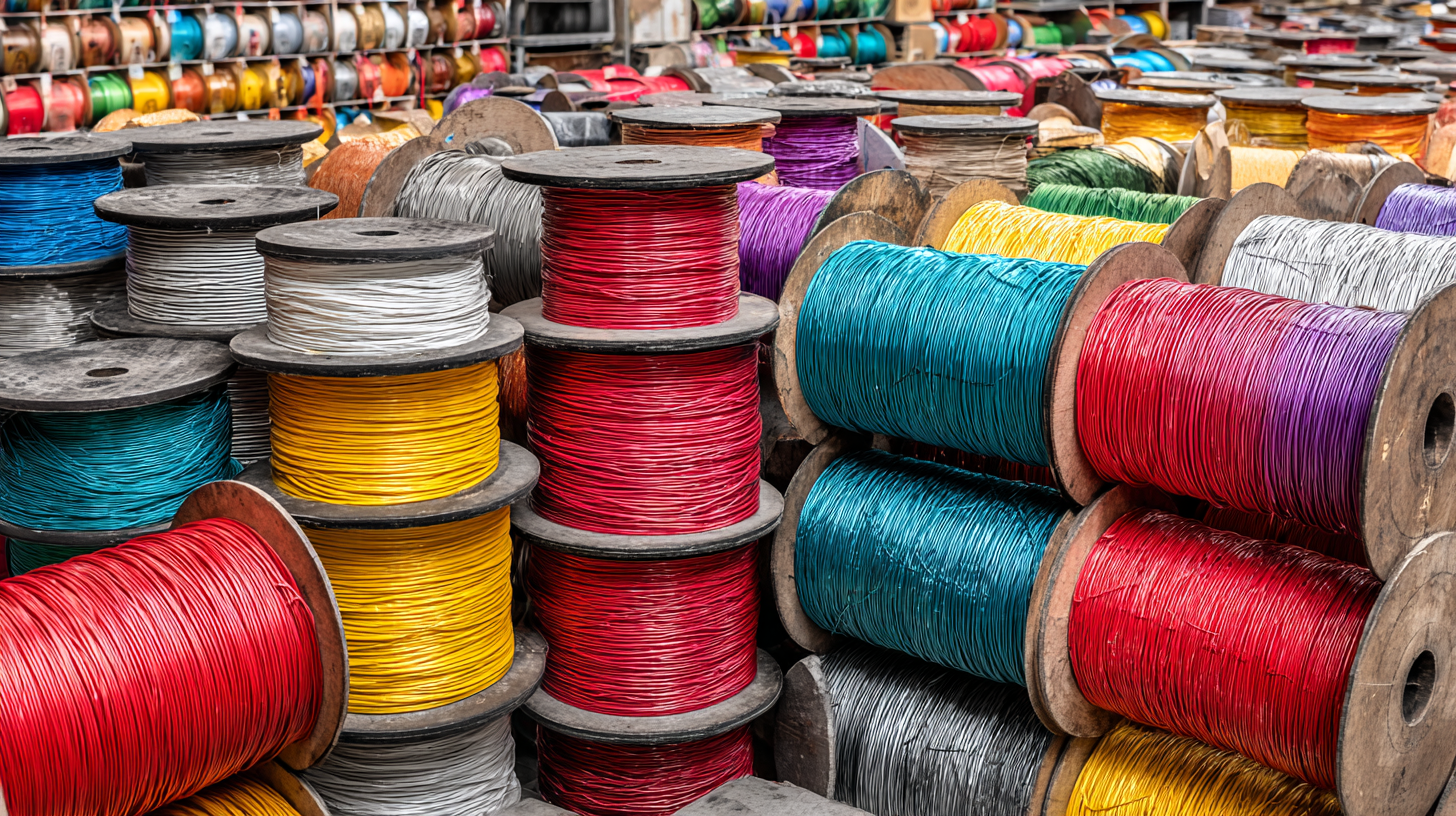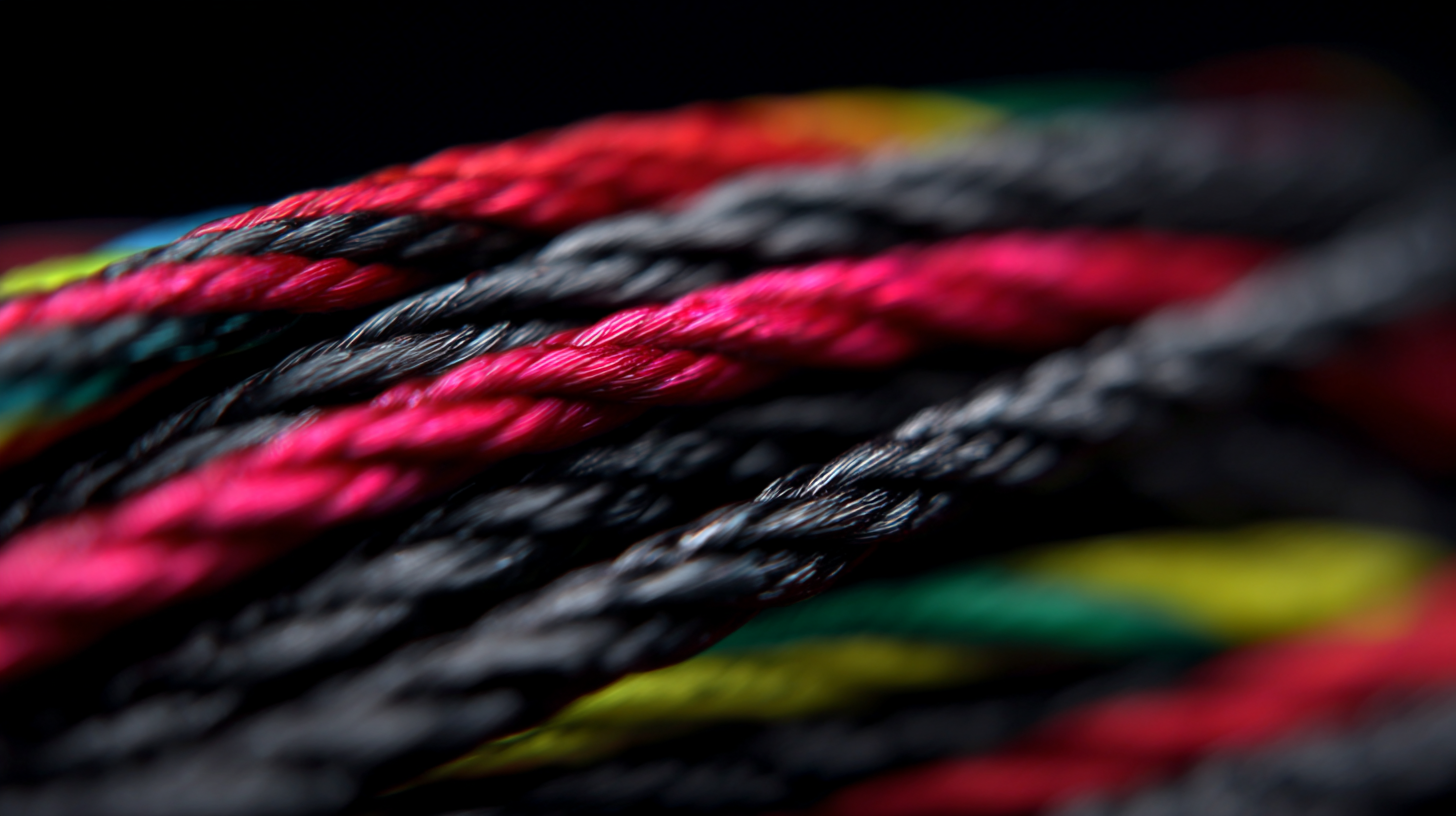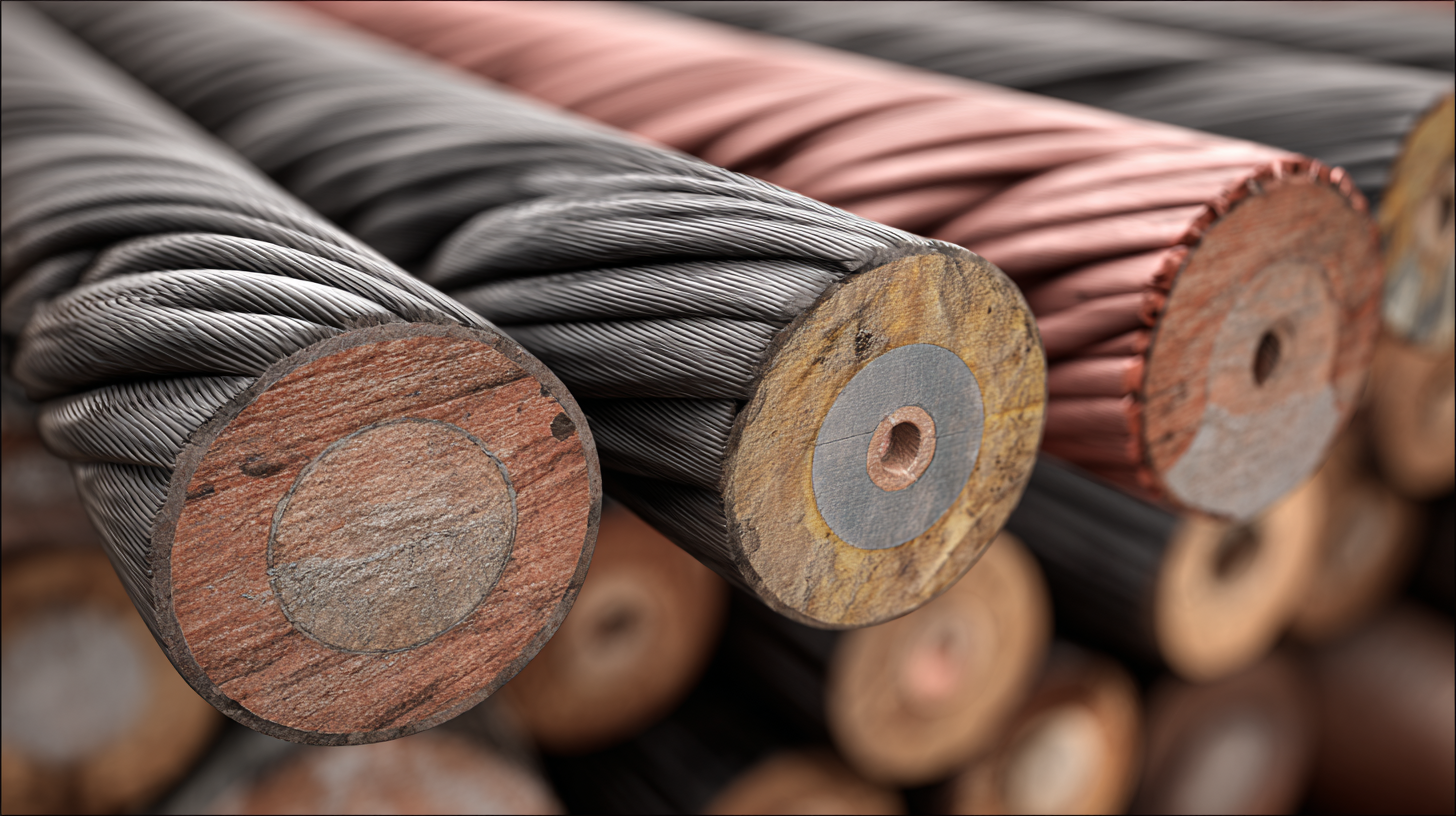
-
Home
-
Products
-
PVC Cable Material
-
Low Smoke Zero Halogen Cable Material
-
Cable material
-
Optical fiber cable
-
-
About Us
-
VR
-
News
-
Blog
-
Contact Us
Leave Your Message

In the rapidly evolving world of telecommunications and electrical infrastructure, the demand for high-quality components has never been more critical. One such component that plays a pivotal role is Pe Cable Material, known for its durability, flexibility, and resistance to environmental factors. As industries aim to enhance their operational efficiency and sustainability, sourcing the best Pe Cable Material globally has become a priority. This blog delves into innovative solutions that facilitate the procurement of superior Pe Cable Material by exploring various sourcing strategies, technological advancements, and quality assurance practices. By harnessing these insights, manufacturers and suppliers can not only optimize their supply chains but also ensure that their products meet the highest standards of reliability and performance in an increasingly competitive market.

As the demand for performance-oriented PE cable materials surges, the industry is witnessing a growing focus on renewable energy and sustainable practices. The shift towards renewable energy sources like solar, wind, and hydropower not only drives innovation in cable material sourcing but also shapes the standards for quality and efficiency. Manufacturers are actively seeking materials that not only meet the technical specifications required for enhanced performance but also align with eco-friendly production processes. This synergy between sustainability and technology encourages the development of PE cable solutions that can efficiently transmit energy while minimizing environmental impact.
Emerging trends in the sourcing of PE cable materials reveal a heightened emphasis on circular economy principles. Suppliers are now investing in research and development to enhance the recyclability and longevity of cable materials, ensuring they contribute positively to both performance and the planet. Furthermore, partnerships within the supply chain are evolving, fostering collaboration between manufacturers and renewable energy developers to create tailored solutions that meet specific project needs. This proactive approach not only satisfies market demands but also positions companies at the forefront of a rapidly evolving industry, where the integration of sustainability and innovation is paramount.
In 2023, the global demand for high-quality PE cables continues to surge, driven by the increasing emphasis on reliable and efficient infrastructure. The wire and cable market is projected to grow significantly, with an estimated value reaching USD 420.65 billion by 2034, reflecting a robust compound annual growth rate (CAGR) of 6.28%. This growth can be attributed to the expanding construction and renewable energy sectors, which require durable and high-performance materials for optimal functionality.
Moreover, the broader plastics market is expected to see substantial growth, anticipated to hit USD 980.86 billion by 2034, up from USD 651.15 billion in 2024. This surge is closely linked to the rising demand for versatile materials like polyethylene, which is widely utilized in the production of cables. As industries prioritize sustainability and innovation, sourcing high-quality PE cable materials becomes vital. Stakeholders are encouraged to focus on global sourcing strategies to ensure they meet the evolving market demands while maintaining competitive performance standards.
| Region | Demand (Metric Tons) | Average Price per Ton (USD) | Growth Rate (%) | Key Applications |
|---|---|---|---|---|
| North America | 500,000 | $1,500 | 5.0 | Telecommunications, Power Distribution |
| Europe | 400,000 | $1,450 | 4.5 | Renewable Energy, Construction |
| Asia-Pacific | 800,000 | $1,350 | 6.0 | Industrial Applications, Infrastructure |
| Latin America | 300,000 | $1,400 | 3.5 | Telecom Infrastructure, Energy |
| Middle East & Africa | 250,000 | $1,600 | 5.5 | Oil and Gas, Utilities |
Sustainable sourcing strategies for PE cable materials are increasingly becoming essential as businesses recognize the importance of integrating sustainability into their operations. By focusing on renewable resources and implementing circular economy principles, companies can not only reduce their environmental footprint but also gain a competitive edge in the electrical wire and cable industry. This is particularly relevant in a market that is shifting towards greener technologies and energy sources, such as solar and wind power.
To optimize your sourcing strategies, consider these tips: First, collaborate with suppliers who prioritize sustainable practices and can provide eco-friendly materials. This partnership fosters innovation and supports the development of new products with minimal environmental impact. Second, invest in research to stay ahead of market trends; understanding the latest advancements in insulation materials can lead to significant improvements in efficiency and sustainability.
Finally, analyze your supply chain for opportunities to enhance circularity. Implementing recycling programs and utilizing reclaimed materials are effective ways to close the loop, making your sourcing practice not only responsible but also economically beneficial. By adopting these sustainable sourcing strategies, businesses can ensure they remain competitive while contributing positively to the environment.

As the demand for renewable energy sources continues to rise, the focus on sourcing high-quality PE cable materials has become paramount. Innovations in technology are significantly enhancing the efficiency of PE cable production, which is crucial for the implementation of renewable energy projects such as solar, wind, and hydropower. According to industry reports, the global market for renewable energy cables is projected to grow significantly, with a compound annual growth rate (CAGR) of over 10% expected by 2028. This growth can be largely attributed to advancements in production techniques and materials that not only improve performance but also align with sustainability goals.

Furthermore, addressing plastic pollution is vital as the world grapples with millions of tons of synthetic polymers in landfills and oceans. The innovative biotechnological approaches aimed at plastic degradation offer promising pathways to sustainable waste management. By integrating these solutions into the production of PE cables, manufacturers can significantly reduce their environmental footprint while producing materials that meet the stringent standards required by the renewable energy sector. Reports suggest that the incorporation of biodegradable alternatives in cable manufacturing could effectively decrease the reliance on traditional plastics, fostering a greener industry aligned with global sustainability initiatives.
The global PE cable materials market is on the cusp of significant growth, driven by increasing infrastructure development and the rising demand for reliable cabling solutions. According to industry projections, the overall wire and cable materials market is expected to escalate from $173.52 billion in 2025 to $244.44 billion by 2032, achieving a compound annual growth rate (CAGR) of 5.0%. This expansion is indicative of the critical role that polyethylene (PE) plays in ensuring the durability and fire safety of cable products, particularly in commercial and residential applications.
Key suppliers within the PE cable materials sector are pivotal to this market transformation. A noteworthy segment, the fire-resistant cable market, which was valued at $1.8 billion in 2021, is anticipated to reach $2.1 billion by 2026, reflecting a CAGR of 3.3%. As standards for safety and performance continue to rise, key manufacturers are innovating to enhance the attributes of PE materials, ensuring compliance with regulations while meeting the increasing demands of various voltage applications across low, medium, and high-voltage installations. This proactive approach not only propels market growth but also significantly influences the technological advancements within the industry.